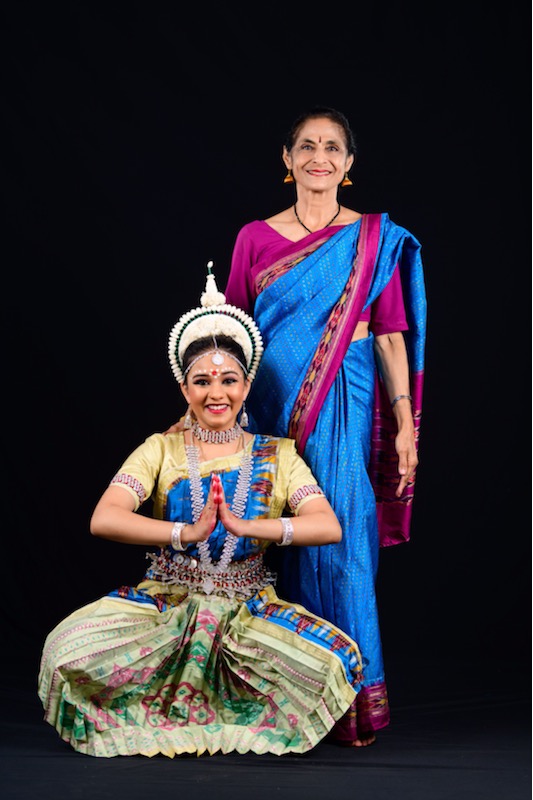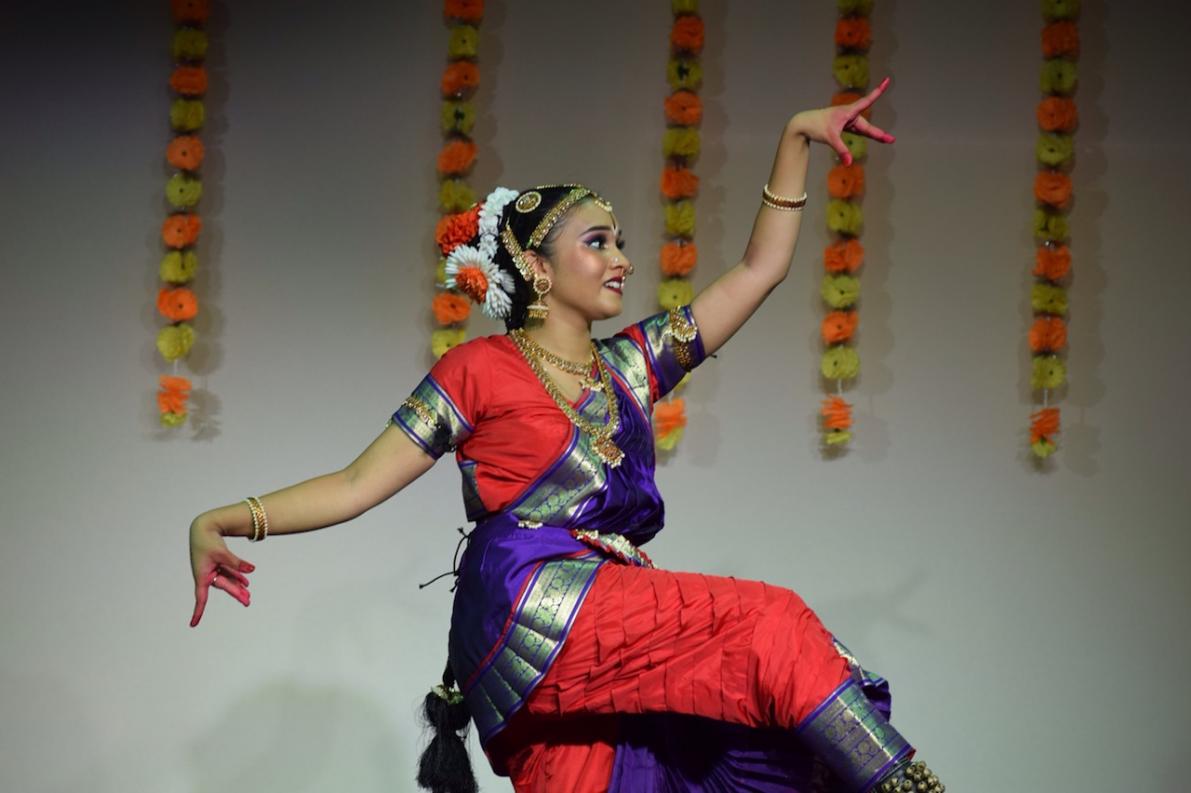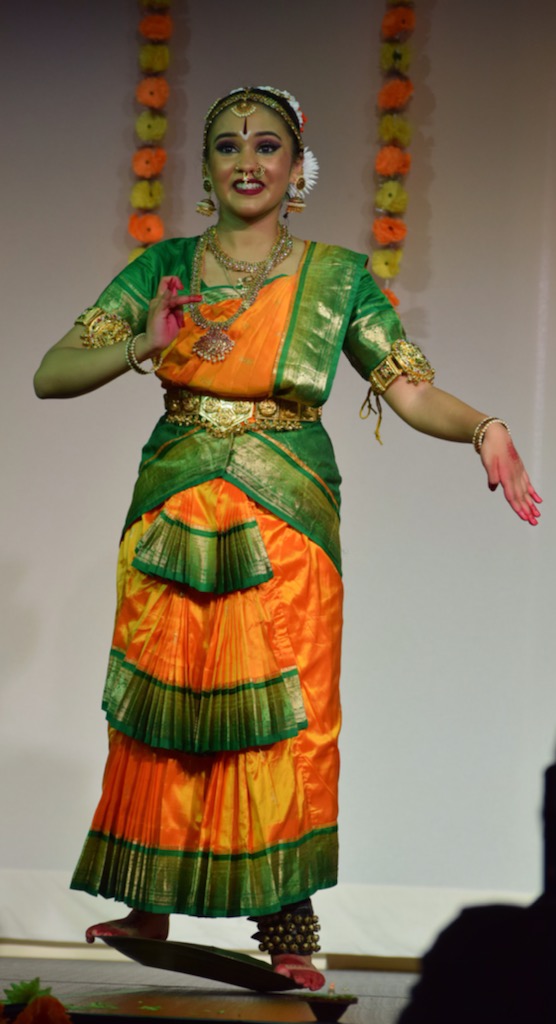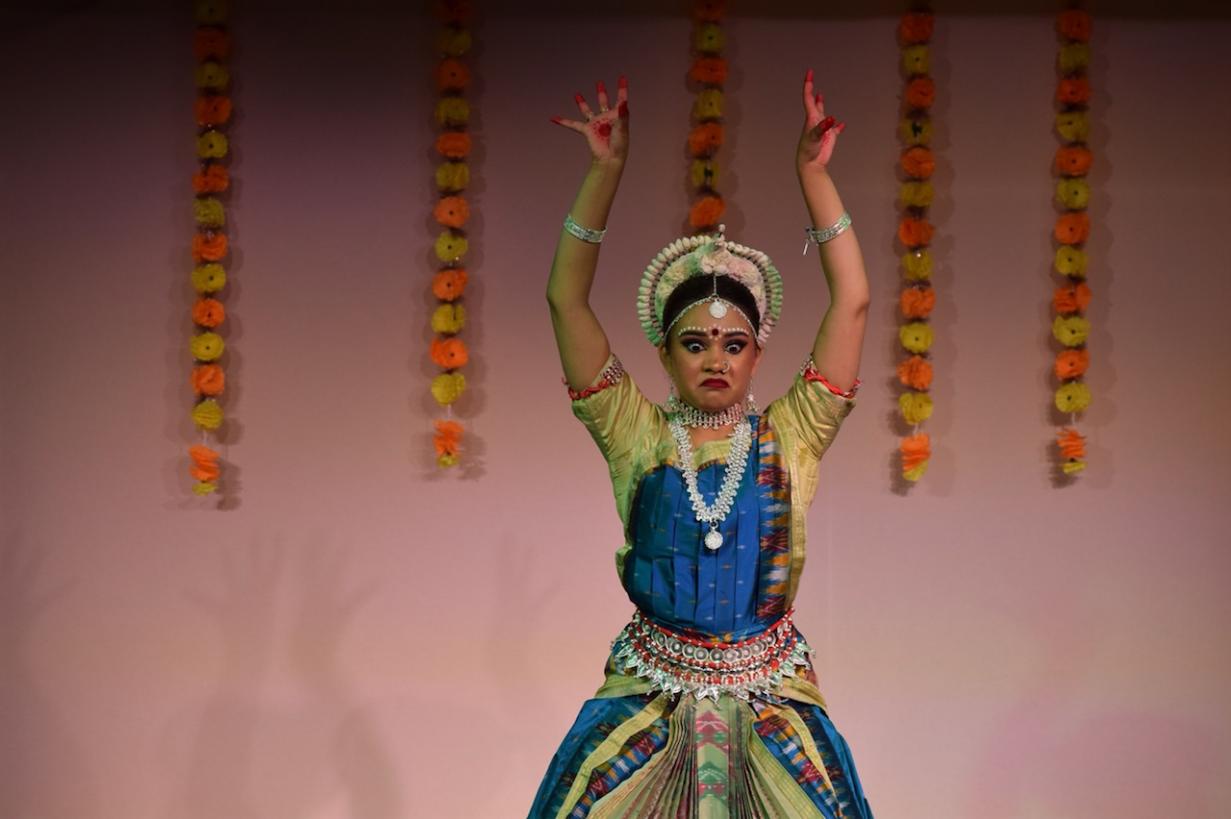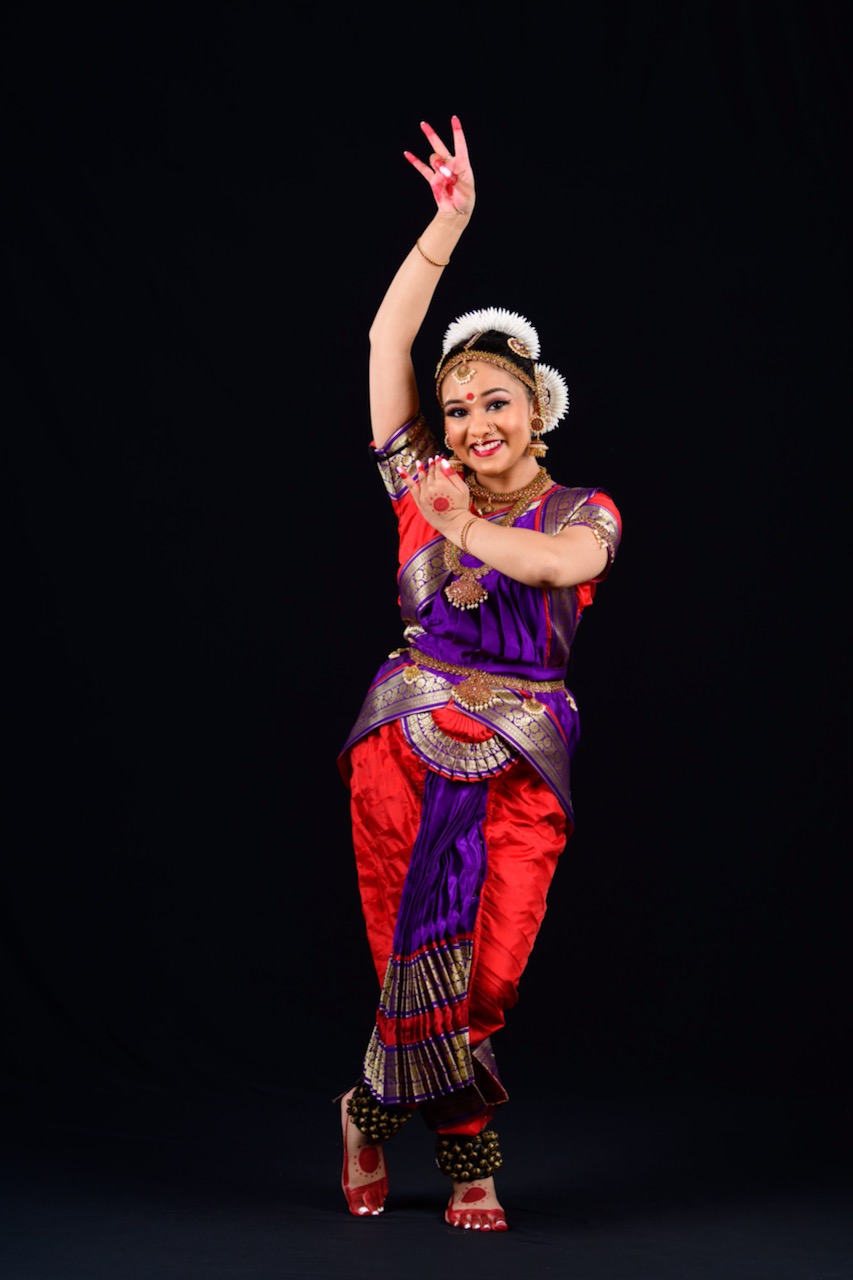Arangetram: Cyindia Uma Goolcharan
Not every dancer gets to have a perfect day for their arangetram. But Cyindia Uma Goolcharan is one artist who beautifully showcased India’s classical dances on a special day. On August 15, 2021, the 75th anniversary of India’s independence, Cyindia ascended the stage to perform a puja for Nataraja and to seek blessings from her Guru, Srimathi Neena Gulati, who presented her with dance bells wishing her well for her big day. Cyindia’s arangetram was held at an auspicious place, at the Sri Lakshmi Temple in Ashland.
Cyindia opened the program with three dances in the classical Odissi style, a traditional form of dance originating from the state of Odisha. The first piece was an invocation to Lord Ganesha, “Pada Bande Gananatha†in raga Khamaj. After that, she performed Sthai, a pure dance in which the dancer’s eyes, hands, intricate footwork and precise movements highlight the different musical instruments that create the music for this dance. Cyindia beautifully presented sculpturesque poses that reminded us of the divine musicians carved into the pillars of ancient temples. Cyindia performed a complex story-telling piece known as the Dashavatar, a classical center piece of the Odissi repertoire. This dance in ragamalika illustrates the ten incarnations of Maha Vishnu. This specific version of the story, as written by the Sanskrit poet Jayadeva, is unusual as it is written in praise of Lord Krishna, with Krishna’s Avatar replaced by Balarama. In Jayadeva’s version, Krishna manifests himself into ten incarnations to cleanse the world of evil. These forms are Matsya (fish), Kurma (tortoise), Varaha (boar), Narasimha (man-lion), Vamana (dwarf), Parashurama (warrior), Rama (the noble one), Balarama (ploughman), Buddha (the enlightened one), and Kalki (the liberator). Cyindia illustrated each avatar with such intensity, poise and crispness that, when she became Narasimha and Kalki respectively, she was fierce and powerful while as Buddha she became as peaceful as a lotus floating on a pond.
Cyindia then followed with five dances, the first three in Bharathanatyam and the last two in Kuchipudi, two major forms of Indian classical dances, originating from Tamil Nadu and Andhra Pradesh, respectively. The first dance was a complex Varnam on Goddess Meenakshi in raga Simhendramadhyamam. With precise movements, Cyindia excelled at each jathi and story section, changing her emotions to show compassion, power, fierceness and sadness. After that she presented Nrithyalaya Vinyasa, a dance in ragamalika, which highlights the complex rhythmic footwork that is most significant to Bharathanatyam dance. Cyindia then performed a complex Tillana in raga Hindolam. Here, every lunge and mudra (hand gesture) was expressed to its fullest extent before ending with a verse praising the Goddess Kamakshi.
Cyindia introduced Kuchipudi with Kaliya Nartana. This dance in raga Gambheera Nata, recounts the tale of Krishna becoming a snake dancer to mesmerize the evil serpent Kaliya in the Yamuna River. Cyindia’s performance of the writhing Kaliya and playful Krishna skipping over the water beautifully contrasted each other as she skillfully showcased the difference between the energetic young hero and his defiant serpent enemy. Cyindia concluded with a grand finale performing the Balagopala Tarangam culminating with a rhythmic performance on the rim of a brass plate. Matching her steps to her Guru Srimathi Neena Gulati’s vocalized series of jatis continuously increasing in tempo, really built the dance up to a climax.
Cyindia closed her arangetram by thanking Lord Nataraja for giving her the strength to perform, her Guru Srimathi Neena Gulati for giving her knowledge and training, the musicians who accompanied her and finally the audience for coming to watch her perform during this spectacular occasion. Cyindia’s dance was showcased by the brilliant music created by The Triveni School of Dance Orchestra, which included Srimathi Neena Gulati (Nattuvangam), Srimathi Bhuvana Ganesh (Vocal), Sri Surya Sundararajan (Violin), Dr. Ram Naidu (Veena), and Sri Gaurishankar Chandrashekhar (Mridangam).
Neena Gulati is the founder and director of Triveni School of Dance, which was established in 1971. This year the school is celebrating its 50th anniversary. Cyindia is a junior at Suffolk University where she is currently majoring in law.
The photography was done by Leena Bhave and Naga Gandham/Ng Photography.
